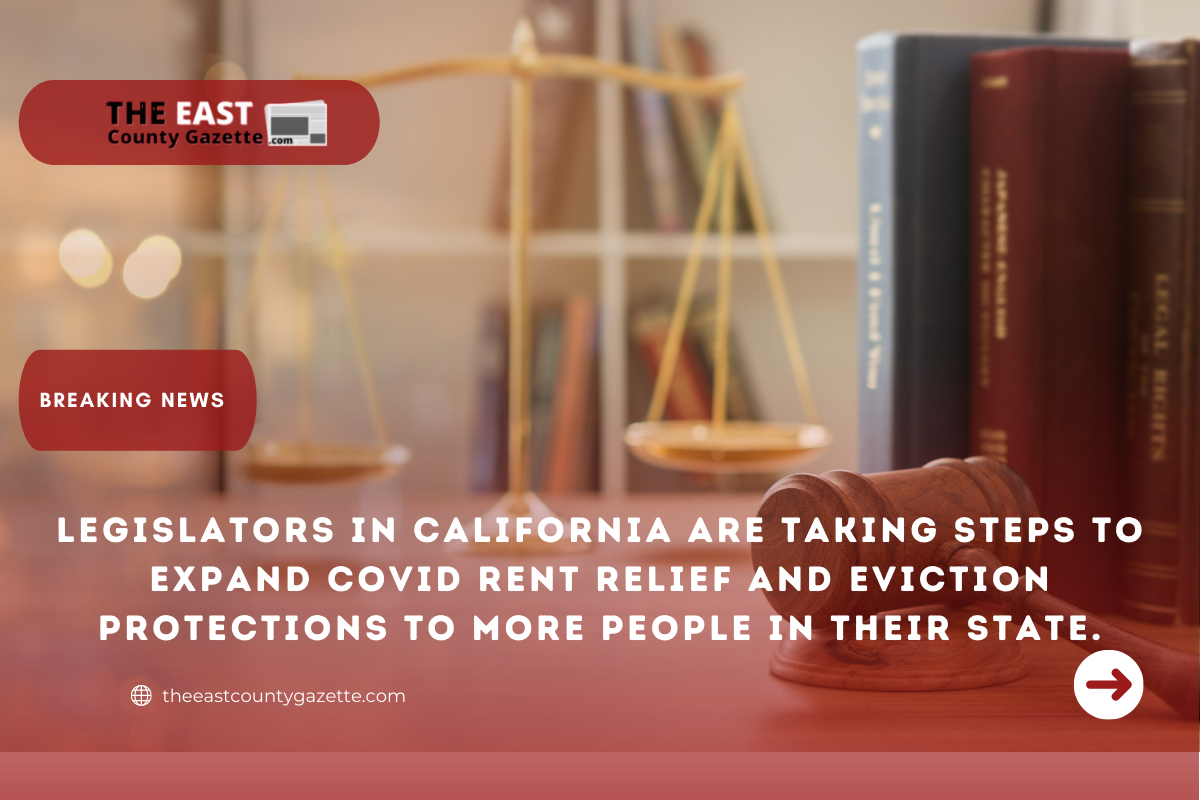Legislators in California are taking steps to expand COVID rent relief and eviction protections to more people in their state.
Democrats in the legislature revealed a plan to prolong COVID-19 epidemic protections for tenants by three months on Thursday, one week before the state’s eviction moratorium was set to expire.
If an application for a rent assistance program is received by March 31, landlords will be able to begin eviction procedures on July 1, rather than April 1. They argued that the extension would allow applicants more time to get assistance and avoid losing their homes.

Toni Atkins (D-San Diego) and Assembly Speaker Anthony Rendon (D-Lakewood) said that “qualified tenants who have applied for relief monies but haven’t received them yet, or who plan to apply before the March 31 deadline, deserve to be protected” in a joint statement.
Because of how long the procedure is taking, we made a commitment to people who are waiting in line. As a result, both the Assembly and Senate will act quickly on AB 2179.
Efforts to safeguard renters from eviction due to pandemic-related hardship have been ongoing for two years. Last year, the state of California obtained federal funding totaling $5.2 billion for the establishment of a rent relief program aimed at easing the financial strain on both tenants and landlords.
A total of around $2.6 billion of that sum is the responsibility of the state, which designed and implemented its own program. A few local governments put up their own programs and received the rest of their funds.
Both landlords and tenants can seek assistance through the state-run program, but they must demonstrate COVID-19 hardship in order to be eligible. Tenants at risk of eviction are given priority under the program, which covers up to 100% of their arrears on rent and utilities.
According to a March study by the independent Public Policy Institute of California, 71% of likely voters consider housing affordability a major problem, and 44% of those surveyed stated they were concerned about making their rent or mortgage payments.
According to the California Budget and Policy Center, 48% of low-income tenants were unable to pay their rent in January and February of this year.
The measure does not alter the March 31 deadline for submitting a rental aid application, but it does prohibit people who are still waiting in line and have not yet received state or local funds from being evicted.
Since the beginning of the year, advocates have expressed fear that thousands of Californians may be evicted even though they have pending applications for housing.
Tim Grayson, a Concord Democrat who co-wrote the proposal, stated, “It is on us to take care of the thousands of Californians—landlords and tenants—who called out to state agencies for help and still have their applications pending.”
To expose these Californians to eviction or the loss of rental income now, when they have done everything asked for and their emergency rental aid is about to be distributed, would be cruel, wasteful, and unfair.
For the state-run relief program, demand has been unusually high. According to a state dashboard that tracks the program, 214,247 of the 489,879 homes that applied have received assistance. The average amount of help is $11,488.
Relief payments totaling $2.46 billion have been made by the state, and the US Treasury Department has sought an additional $1.9 billion in November. California has received $200 million from the federal government so far, but officials expect more in the near future. Data from local-run initiatives is not included in this dashboard.
This relief was made more widely available when lawmakers passed a bill in February that made it easier for those who needed it to apply by easing eligibility requirements.
Geoffrey Ross, a deputy director at the state Department of Housing and Community Development, indicated that the state was able to speed up the processing of payments by 25% as a result of this intervention. As a result of legislative intervention, the agency has increased its weekly payment processing capacity from 8,000 to 10,000.
There is no doubt that “the department is fully dedicated to paying every eligible applicant,” Ross said; the department’s goal is to complete the payments by early summer.
In a statement, he stated, “We will not rest until the ultimate payment is completed.”
Local eviction moratoriums would likewise be superseded by the new bill’s new eviction provisions. On Monday, a legislative committee will consider it.
California Apartment Association Communications Director Mike Nemeth said the act will “keep a consistent standard for eviction rights across California” and prevent “a mishmash of municipal rules for tenants, landlords, and judges to understand.”
After June 30, if all pending (rent relief) applications and payments have been completed, “the California Apartment Association hopes that the state will work through all pending (rent relief) applications and make the proper payments,” Nemeth stated.
The Alliance of Californians for Community Empowerment, on the other hand, advocated for more robust safeguards. The group said in a written statement that the state should extend the deadline for households to apply for help and let local jurisdictions adopt their own protections for renters.
More than that, however, “thousands of families will be forced to leave their homes,” according to the group’s statement.
There is a message that reads, “If the Governor and State Leadership realized the level of anxiety and instability felt by renters, they would do more.” There are still thousands of families struggling to recover from this pandemic.

